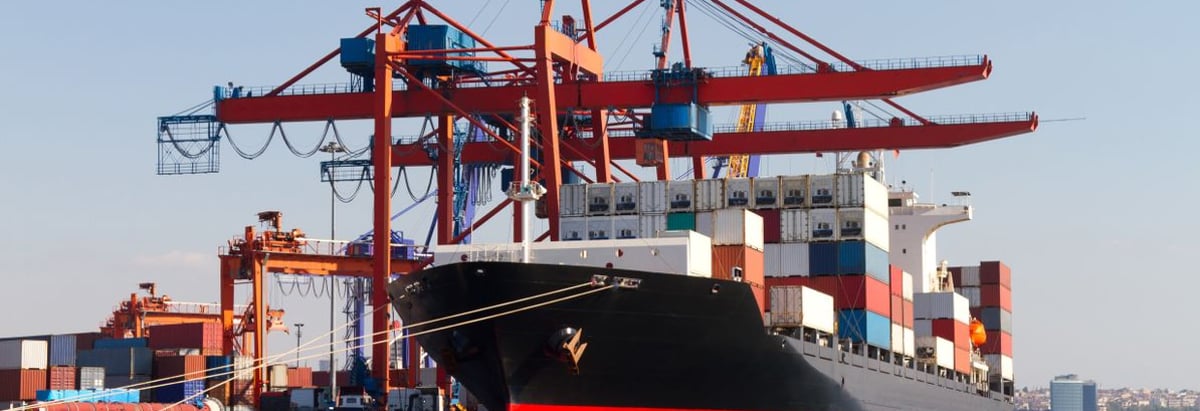Stock Analysis
- Germany
- /
- Marine and Shipping
- /
- XTRA:HLAG
Hapag-Lloyd (ETR:HLAG) Seems To Use Debt Quite Sensibly

Some say volatility, rather than debt, is the best way to think about risk as an investor, but Warren Buffett famously said that 'Volatility is far from synonymous with risk.' So it might be obvious that you need to consider debt, when you think about how risky any given stock is, because too much debt can sink a company. We note that Hapag-Lloyd Aktiengesellschaft (ETR:HLAG) does have debt on its balance sheet. But the real question is whether this debt is making the company risky.
Why Does Debt Bring Risk?
Debt and other liabilities become risky for a business when it cannot easily fulfill those obligations, either with free cash flow or by raising capital at an attractive price. If things get really bad, the lenders can take control of the business. However, a more frequent (but still costly) occurrence is where a company must issue shares at bargain-basement prices, permanently diluting shareholders, just to shore up its balance sheet. Having said that, the most common situation is where a company manages its debt reasonably well - and to its own advantage. The first thing to do when considering how much debt a business uses is to look at its cash and debt together.
View our latest analysis for Hapag-Lloyd
What Is Hapag-Lloyd's Debt?
The image below, which you can click on for greater detail, shows that at March 2024 Hapag-Lloyd had debt of €2.83b, up from €2.62b in one year. But on the other hand it also has €5.83b in cash, leading to a €3.00b net cash position.
A Look At Hapag-Lloyd's Liabilities
The latest balance sheet data shows that Hapag-Lloyd had liabilities of €6.12b due within a year, and liabilities of €4.67b falling due after that. Offsetting these obligations, it had cash of €5.83b as well as receivables valued at €2.16b due within 12 months. So its liabilities total €2.80b more than the combination of its cash and short-term receivables.
Given Hapag-Lloyd has a humongous market capitalization of €27.0b, it's hard to believe these liabilities pose much threat. Having said that, it's clear that we should continue to monitor its balance sheet, lest it change for the worse. Despite its noteworthy liabilities, Hapag-Lloyd boasts net cash, so it's fair to say it does not have a heavy debt load!
The modesty of its debt load may become crucial for Hapag-Lloyd if management cannot prevent a repeat of the 92% cut to EBIT over the last year. Falling earnings (if the trend continues) could eventually make even modest debt quite risky. There's no doubt that we learn most about debt from the balance sheet. But it is future earnings, more than anything, that will determine Hapag-Lloyd's ability to maintain a healthy balance sheet going forward. So if you want to see what the professionals think, you might find this free report on analyst profit forecasts to be interesting.
But our final consideration is also important, because a company cannot pay debt with paper profits; it needs cold hard cash. While Hapag-Lloyd has net cash on its balance sheet, it's still worth taking a look at its ability to convert earnings before interest and tax (EBIT) to free cash flow, to help us understand how quickly it is building (or eroding) that cash balance. Happily for any shareholders, Hapag-Lloyd actually produced more free cash flow than EBIT over the last three years. That sort of strong cash generation warms our hearts like a puppy in a bumblebee suit.
Summing Up
While Hapag-Lloyd does have more liabilities than liquid assets, it also has net cash of €3.00b. The cherry on top was that in converted 103% of that EBIT to free cash flow, bringing in €1.0b. So we are not troubled with Hapag-Lloyd's debt use. The balance sheet is clearly the area to focus on when you are analysing debt. But ultimately, every company can contain risks that exist outside of the balance sheet. These risks can be hard to spot. Every company has them, and we've spotted 3 warning signs for Hapag-Lloyd (of which 2 are potentially serious!) you should know about.
If, after all that, you're more interested in a fast growing company with a rock-solid balance sheet, then check out our list of net cash growth stocks without delay.
Valuation is complex, but we're here to simplify it.
Discover if Hapag-Lloyd might be undervalued or overvalued with our detailed analysis, featuring fair value estimates, potential risks, dividends, insider trades, and its financial condition.
Access Free AnalysisHave feedback on this article? Concerned about the content? Get in touch with us directly. Alternatively, email editorial-team (at) simplywallst.com.
This article by Simply Wall St is general in nature. We provide commentary based on historical data and analyst forecasts only using an unbiased methodology and our articles are not intended to be financial advice. It does not constitute a recommendation to buy or sell any stock, and does not take account of your objectives, or your financial situation. We aim to bring you long-term focused analysis driven by fundamental data. Note that our analysis may not factor in the latest price-sensitive company announcements or qualitative material. Simply Wall St has no position in any stocks mentioned.
About XTRA:HLAG
Hapag-Lloyd
Operates as a liner shipping company worldwide.

